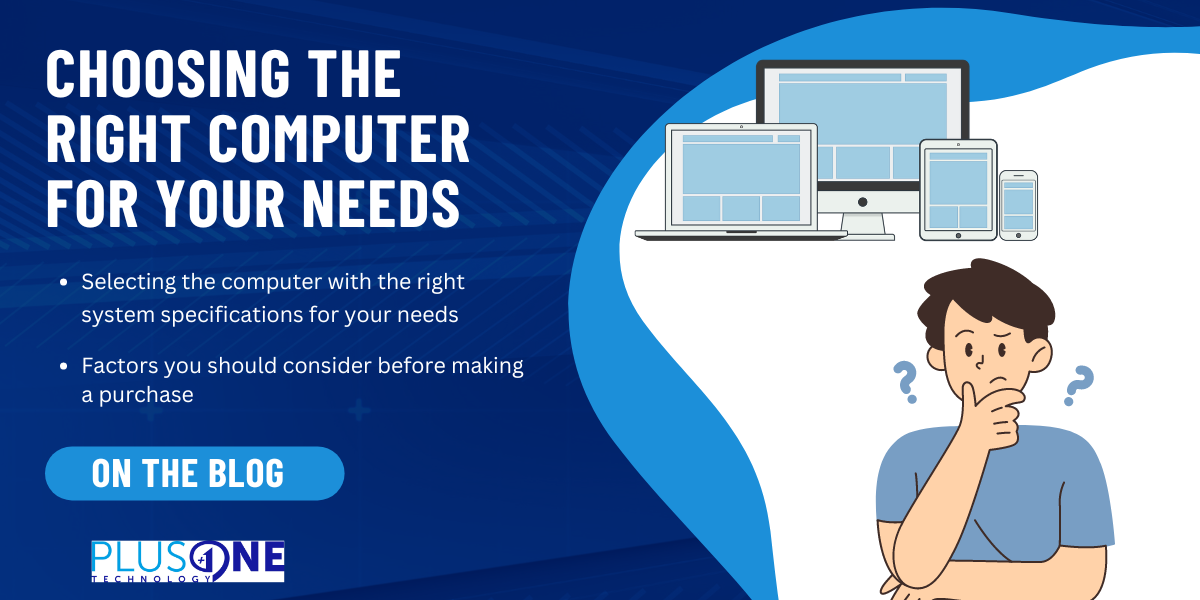A guide to help you select the best device for your software and industry
Introduction
Computers are essential tools for many industries and professions, especially those that rely on CAD, 3D, video, and AI applications. However, not all computers are created equal, and choosing the wrong one can lead to frustration, inefficiency, and poor performance. In this blog post, we will discuss the importance of selecting the computer with the right system specifications for your needs, and what factors you should consider before making a purchase.
What are system specifications?
System specifications, or system requirements, are the minimum and recommended standards that a computer must meet to run a certain software or application. They usually include four main components: CPU, RAM, GPU, and storage.
- CPU (central processing unit) is the brain of the computer, responsible for executing instructions and performing calculations. The speed and power of the CPU affect how fast the computer can process data and run multiple tasks at once.
- RAM (random access memory) is the short-term memory of the computer, where it stores the data and programs that are currently in use. The more RAM the computer has, the more data it can access quickly and smoothly.
- GPU (graphics processing unit) is the part of the computer that handles graphics and video, especially for 3D rendering and video. The quality and performance of the GPU affect how well the computer can display complex and realistic images and animations.
- Storage is the long-term memory of the computer, where it saves the data and programs that are not in use. The amount and type of storage affect how much data the computer can store and how fast it can access it.
Different software and applications have different system requirements, depending on the complexity and functionality of the program. For example, a word processor may only need a basic CPU, RAM, and storage, while a video editing software may need a powerful CPU, RAM, GPU, and storage.
Why are system specifications important?
System specifications are important because they determine how well the computer can run the software and applications that you need for your work or hobby. If the computer does not meet the minimum system requirements, it may not be able to run the software at all, or it may run very slowly and crash frequently. If the computer meets the minimum system requirements, it may be able to run the software, but it may not be able to handle the full features and functions of the program, or it may experience lagging and freezing. If the computer meets or exceeds the recommended system requirements, it should be able to run the software smoothly and efficiently, with optimal performance and quality.
Choosing the right computer for your needs can have many benefits, such as:
- Improving your productivity and creativity by allowing you to work faster and easier
- Enhancing your user experience and satisfaction by providing you with a smooth and enjoyable operation
- Extending the lifespan and value of your computer by reducing the wear and tear and the need for upgrades
- Saving you time and money by avoiding unnecessary repairs and replacements
How to choose the right computer for your needs?
Choosing the right computer for your needs can be a challenging task, especially with so many options and features available in the market. However, there are some steps that you can follow to make the process easier and more effective.
- Identify your needs and goals. What software and applications do you use or plan to use? What are the system requirements for those programs? What are the main tasks and functions that you perform with your computer? How often and how long do you use your computer? What are your expectations and preferences for the performance and quality of your computer?
- Consult your MSP. Based on your needs and goals, your MSP will find a device that meets or exceeds the system requirements for your software and applications. They can offer options including optional features and specifications of different models and brands, such as the CPU, RAM, GPU, storage, screen size, battery life, weight, design, etc.
- Your MSP can also help you with the installation, configuration, maintenance, and support of your computer, ensuring that it runs smoothly and securely.
Conclusion
Choosing the right computer for your needs is an important decision that can affect your work and life. By following the steps above, you can find the best device that meets the system requirements for your software and industry, and that suits your budget and style. Remember to always consult your MSP before purchasing any new computer equipment, as they can help you with the whole process and ensure that you get the most out of your computer.







